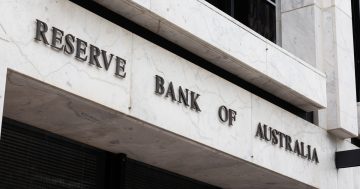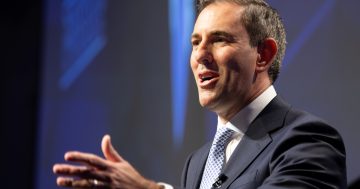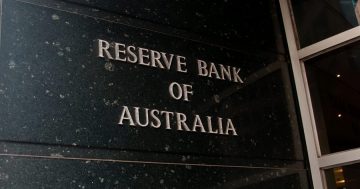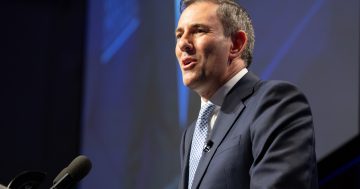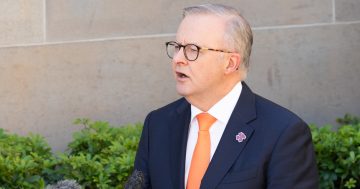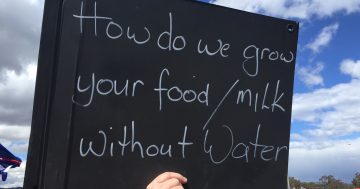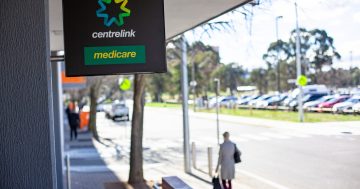Michael Janda and Emilia Terzon* discuss the impacts of the Reserve Bank’s recent interest rate rise.
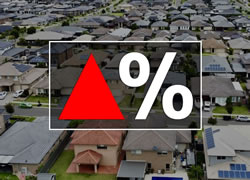 The Reserve Bank has increased interest rates for the first time in more than 11 years, with a 25-basis-point hike taking the cash rate target to 0.35 per cent.
The Reserve Bank has increased interest rates for the first time in more than 11 years, with a 25-basis-point hike taking the cash rate target to 0.35 per cent.
If passed on in full by banks, the rate rise will add more than $50 a month to repayments on a $500,000 mortgage, and double that on a million-dollar loan.
The Commonwealth Bank was the first major bank to respond, raising its standard variable mortgage rates by 25 basis points across the board from May 20, while ANZ will lift rates by the same amount from May 13.
The move came as little surprise to financial traders, who had priced in around a two-thirds probability of the RBA raising rates this month.
Reserve Bank governor Philip Lowe said the combination of recent very high inflation numbers and evidence that workers were starting to get bigger wage increases meant the time was right for “normalising” interest rates away from emergency lows.
“The board is committed to doing what is necessary to ensure that inflation in Australia returns to target over time,” he noted in his post-meeting statement.
“This will require a further lift in interest rates over the period ahead.”
Mr Lowe told reporters that the cash rate still had a long way to go to get back to more normal levels where it at least matched the rate of inflation.
“Over time it is not unreasonable to expect interest rates would get to 2.5 per cent.
“How quickly we get there, and if we do get there, will be determined by how events unfold.”
Markets are pricing in the certainty of another rise in June, with bets split between another 25-basis-point hike and an even bigger increase — the market’s betting centres on a 0.7 per cent cash rate after the RBA’s June 7 meeting, double the current level of 0.35.
Economists at the major banks remain deeply divided about how high interest rates would rise — from a 1.6 per cent forecast at the Commonwealth Bank up to more than 3 per cent tipped by ANZ.
Westpac was somewhere in the middle, tipping a 2 per cent cash rate sometime next year.
RateCity estimates that would add $512 a month to a $500,000 mortgage, and double that — $1,025 a month — to a million-dollar loan.
Cost of living hit
But the Reserve Bank has now dramatically increased its inflation forecasts.
It is tipping consumer prices to rise as much as 6 per cent this year, and still be growing at an annual rate of 3 per cent in 2024.
Until Tuesday, ANZ senior economist Adelaide Timbrell had not seen a rate rise in her working life.
“This is my first rate hike as an economist,” she told The Business.
“The last cash rate hike happened in 2010, and I actually graduated high school in 2010.”
But she is expecting to see a lot more soon.
“They’re going to keep raising the interest rate to make businesses think twice about investing, about hiring workers and about spending money,” Ms Timbrell said.
“They’re also going to make consumers think twice about spending money.
“What this does is it slows down the spiral effect, where lots of people buy stuff at the same time, and then that stuff gets much more expensive over time.
“So the Reserve Bank is basically increasing the cost of borrowing money to decrease the speed of the cost of living going up.”
But, in the short term, it is a cost-of-living double-whammy for borrowers like Bashir Naim.
He took out a variable mortgage earlier this year to build a new home for his family in Sydney’s west.
“The last few years, all you hear about is rates dropping, the government encouraging people to buy and the housing market booming. Now it’s sort of the opposite,” he said.
“From our perspective, with the cost of building being so high, it hasn’t come at a good time.”
‘Double-dip’ recession risk
Mr Naim said his family should be able to cope with moderate rate rises, but they might have to cut back on some of their non-essential shopping.
“If they go up dramatically, I think there will be a lot people in trouble, not only us,” he said.
“We’re probably in not a bad position, but it’s scary not knowing where the future is heading.”
Mr Lowe acknowledged the challenges facing some borrowers, who may have taken out large loans on the Reserve Bank’s previous comments, repeated throughout most of last year, that interest rates were unlikely to rise until 2024.
“I acknowledge that the increase in interest rates comes earlier than the guidance that the bank was providing during the dark days of the pandemic,” he said, adding that the Reserve Bank would tread carefully in raising rates.
“Households have much more debt than previously and many households have never experienced a rise with interest rates, so this is another aspect we are watching very carefully over the months ahead.”
Steven Hamilton, who is assistant professor of economics at The George Washington University, said some of the Reserve Bank’s communication during the pandemic was a problem.
“I think that the Reserve Bank really erred in providing guidance that was far too fixed,” he said.
“They told markets that they wouldn’t raise until 2024, no matter what, and that’s a pretty silly thing to do, because you never know just how quick the recovery is going to be.
“So recently, the Reserve Bank has had to back-pedal on that guidance, which is not great for their credibility.”
With many people having taken on extra debts in anticipation of super-low interest rates for years to come, Steven Hamilton warned a second recession is a risk of rising rates.
“The risk is if you go too hard, too soon, you could threaten that sort of double-dip kind of situation where the economy starts to contract in response to those interest rate rises,” he said.
Savers rejoice
But not everyone is worried.
Retiree Grant Agnew is currently receiving just 1.09 per cent interest on his savings.
He is one of around two-thirds of the population without a mortgage who are quite happy to see interest rates rise from record lows.
“I get no return on my money. Other people are allowed to borrow it, but I’m not allowed to get anything from them for it,” he told The Business.
“I want the interest rates to go up so that I can get a decent return on my money.
“I want them to go up over 20 per cent, like they did three times in the 1980s. Life was beautiful, money fell from the sky.”
But RateCity research director Sally Tindall warned savers like Mr Agnew may not see a big increase in rates in the short term.
“While we expect banks to finally start lifting deposit rates, there’s no guarantee they’ll mirror the RBA the whole way,” she said.
“Banks are full to the brim with cash. This will make it a costly exercise to pass these hikes on in full.”
In announcing their variable mortgage rate increases, neither CBA nor ANZ mentioned savings rates.
Rate rise could hit house prices
Ms Timbrell also pointed out that rising interest rates were likely to lower house prices, which would potentially benefit aspiring buyers.
“If housing prices fall as a result of the cash rate hikes, then that will help prospective buyers get into the housing market with a lower deposit,” she said.
Although housing analyst Louis Christopher said it might also reduce the amount many prospective buyers can borrow, which should also put downward pressure on housing prices.
“With the rise in lending rates, the overall hurdle rate to test home loan applicants will go up and disqualify an increasing number of would-be home buyers and investors,” he noted.
“This in large part is what is going to drag the [housing] market down for the balance of 2022 and perhaps beyond.”
*Michael Janda has been the ABC’s Online Business Reporter since 2009. Emilia Terzon is a reporter with the ABC’s national business unit.
This article first appeared at abc.net.au


